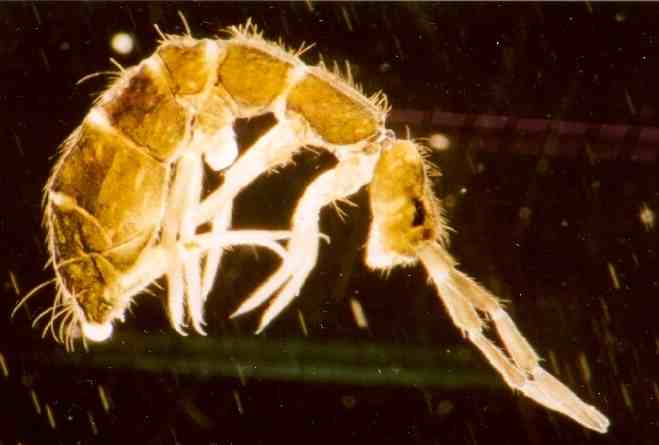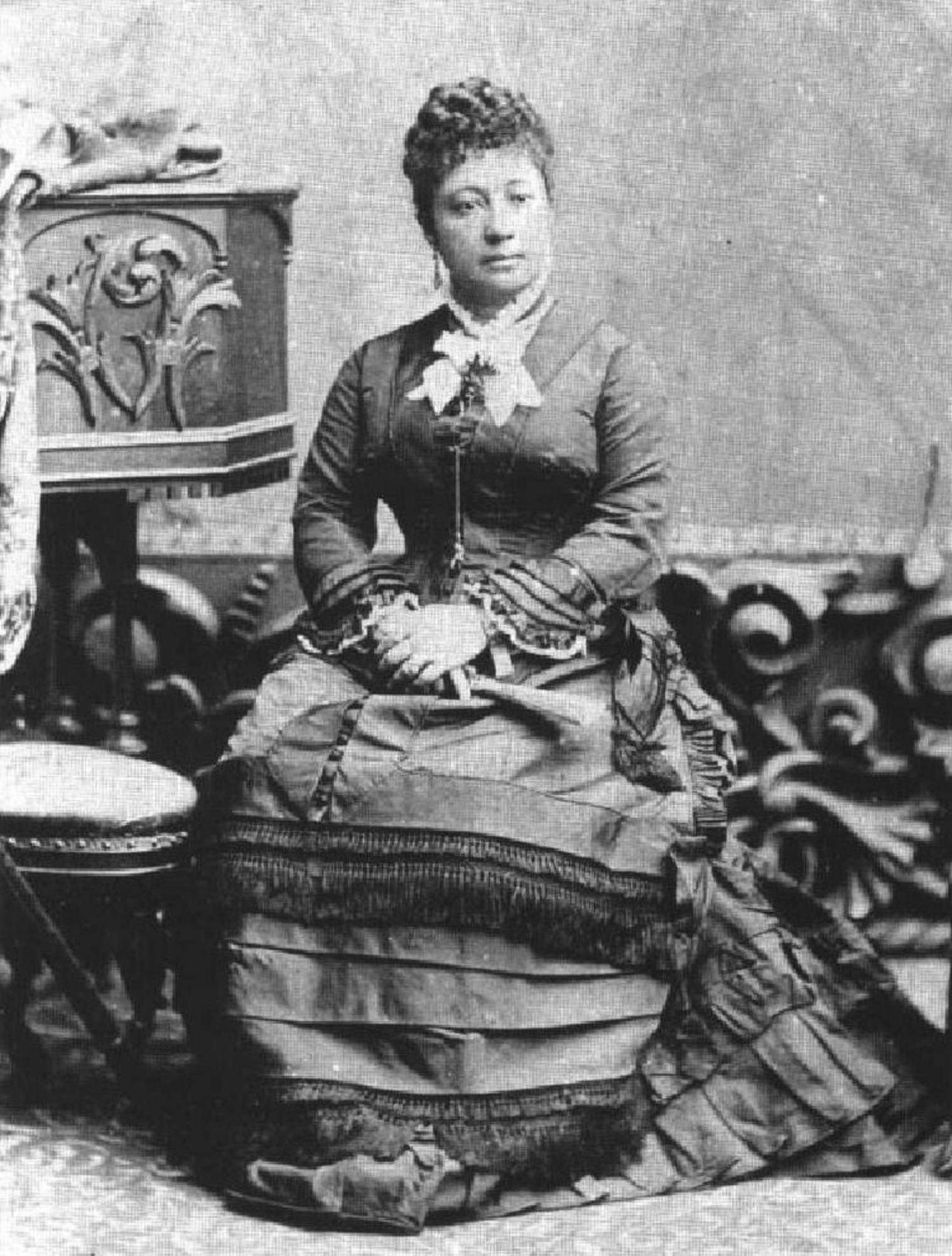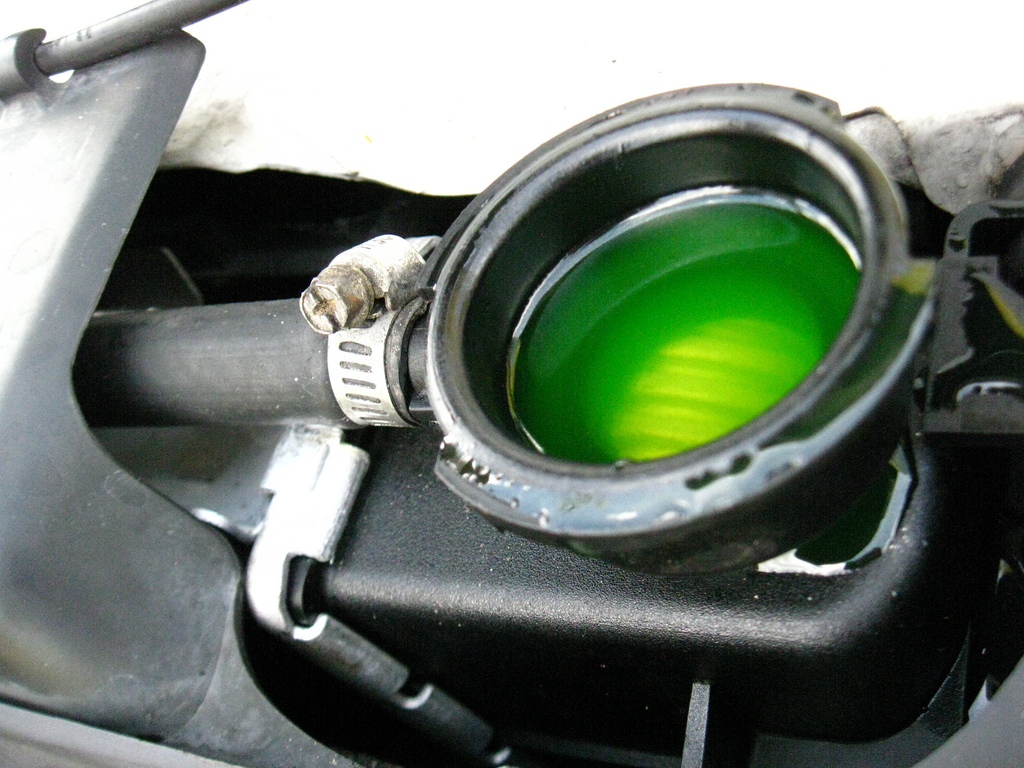|
Cryptopygus Terranovus
''Cryptopygus terranovus'' is a species of springtail belonging to the family Isotomidae. The species was first described by Keith Arthur John Wise in 1967, and is found on Antarctica. Taxonomy The species was identified in 1967 by Wise, who described the species as ''Gressittacantha terranova''. He chose to create a new genus, ''Gressittacantha'', instead of placing the species within ''Cryptopygus'', due to the presence of spines on the species. He named the genus after Judson Linsley Gressitt of the Bishop Museum. In 2015, the genera ''Gressittacantha'' and ''Neocryptopygus'' were synonymised with ''Cryptopygus'', due to phylogenetic analysis showing both as occurring within the ''Cryptopygus'' clade without significant morphological differences. This led to a new name for the species, ''Cryptopygus terranovus''. The species can be split into three genetic groups: north, central and south. ''Cryptopygus terranovus'' has high levels of genetic variability; up to five times mor ... [...More Info...] [...Related Items...] OR: [Wikipedia] [Google] [Baidu] |
Collembola
Springtails (Collembola) form the largest of the three lineages of modern hexapods that are no longer considered insects (the other two are the Protura and Diplura). Although the three orders are sometimes grouped together in a class called Entognatha because they have internal mouthparts, they do not appear to be any more closely related to one another than they are to all insects, which have external mouthparts. Collembolans are omnivorous, free-living organisms that prefer moist conditions. They do not directly engage in the decomposition of organic matter, but contribute to it indirectly through the fragmentation of organic matter and the control of soil microbial communities. The word ''Collembola'' is from the ancient Greek "glue" and "peg"; this name was given due to the existence of the collophore, which was previously thought to stick to surfaces to stabilize the creature. Some DNA sequence studies suggest that Collembola represent a separate evolutionary line ... [...More Info...] [...Related Items...] OR: [Wikipedia] [Google] [Baidu] |
Isotomidae
Isotomidae is a family of elongate-bodied springtails in the order Entomobryomorpha. Genera These 109 genera belong to the family Isotomidae: * '' Aackia'' Yosii, 1966 * '' Acanthomurus'' Womersley, 1934 * '' Aggressopygus'' Potapov & Babenko, 2014 * '' Agrenia'' Boerner, 1906 * '' Antarcticinella'' Salmon, 1965 * '' Antarctophorus'' Potapov, 1992 * '' Anurophorus'' Nicolet, 1842 * '' Appendisotoma'' Stach, 1947 * '' Araucanocyrtus'' Massoud & Rapoport, 1968 * '' Archisotoma'' Linnaniemi, 1912 * '' Arlea'' Womersley, 1939 * '' Axelsonia'' Boener, 1906 * '' Ballistura'' Börner, 1906 * '' Biacantha'' Martynova, 1971 * '' Blissia'' Rusek, 1985 * '' Bonetrura'' Christiansen and Bellinger, 1980 * '' Burmisotoma'' Christiansen & Nascimbene, 2006 * '' Coloburella'' Latzel, 1918 * '' Cryptopygus'' Willem, 1901 * '' Cylindropygus'' Deharveng, Potapov & Bedos, 2005 * '' Dagamaea'' Yosii, 1965 * '' Degamaea'' Yosii, 1965 * '' Desoria'' Agassiz & Nicolet, 1841 * '' Dimorphacanthella'' Potap ... [...More Info...] [...Related Items...] OR: [Wikipedia] [Google] [Baidu] |
Keith Arthur John Wise
Keith Arthur John Wise (1 June 1926 – 31 March 2012), often referred to as K. A. J. Wise, was a New Zealand entomologist. Originally employed at the Department of Scientific and Industrial Research (New Zealand), Department of Scientific and Industrial Research, Wise began working with the Bishop Museum in the early 1960s, coordinating field programmes for United States visits to Antarctica and Subantarctic islands. This work led Wise to identify and describe large numbers of novel species, including many species of springtail. In 1965, Wise became the first Curator of Entomology at the Auckland War Memorial Museum, where he was integral in creating the first entomology section within the natural history gallery. Early life Wise was born on 1 June 1926 in Wellington. As his father Victor John Wise worked in insurance, Wise moved around the country often, living in Whangarei, Invercargill and Oamaru, attending Whangarei Boys' High School, Southland Boys' High School and Waitak ... [...More Info...] [...Related Items...] OR: [Wikipedia] [Google] [Baidu] |
Antarctica
Antarctica () is Earth's southernmost and least-populated continent. Situated almost entirely south of the Antarctic Circle and surrounded by the Southern Ocean, it contains the geographic South Pole. Antarctica is the fifth-largest continent, being about 40% larger than Europe, and has an area of . Most of Antarctica is covered by the Antarctic ice sheet, with an average thickness of . Antarctica is, on average, the coldest, driest, and windiest of the continents, and it has the highest average elevation. It is mainly a polar desert, with annual precipitation of over along the coast and far less inland. About 70% of the world's freshwater reserves are frozen in Antarctica, which, if melted, would raise global sea levels by almost . Antarctica holds the record for the lowest measured temperature on Earth, . The coastal regions can reach temperatures over in summer. Native species of animals include mites, nematodes, penguins, seals and tardigrades. Where ve ... [...More Info...] [...Related Items...] OR: [Wikipedia] [Google] [Baidu] |
Cryptopygus
''Cryptopygus'' is a genus of springtails. ''Cryptopygus'' belongs to the Isotomidae family. Species * ''Cryptopygus agreni'' (Börner, 1903) * ''Cryptopygus albaredai'' Selga 1962 * ''Cryptopygus albus'' Yosii 1939 * '' Cryptopygus ambus'' Christiansen and Bellinger, 1980 * ''Cryptopygus andinus'' DÌaz & Najt 1995 * ''Cryptopygus annobonensis'' Selga 1962 * ''Cryptopygus anomala'' Linnaniemi 1912 * ''Cryptopygus antarcticus'' Willem, 1901 * ''Cryptopygus aquae'' (Bacon, 1914) * ''Cryptopygus araucanus'' Massoud & Rapoport 1968 * '' Cryptopygus arcticus'' Christiansen and Bellinger, 1980 * ''Cryptopygus axayacatl'' Palacios & Thibaud, 2001 * ''Cryptopygus badasa'' Greenslade 1995 * ''Cryptopygus beijiangensis'' Hao & Huang 1995 * '' Cryptopygus benhami'' Christiansen and Bellinger, 1980 * ''Cryptopygus binoculatus'' Deharveng 1981 * ''Cryptopygus bipunctatus'' (Axelson, 1903) * ''Cryptopygus bituberculatus'' (Wahlgren, 1906) * ''Cryptopygus caecus'' Wahlgren 1906 * ''Cryptopygu ... [...More Info...] [...Related Items...] OR: [Wikipedia] [Google] [Baidu] |
Judson Linsley Gressitt
Judson Linsley Gressitt (16 June 1914 – 26 April 1982) was an American entomologist and naturalist who worked in Japan and China. He worked mainly on beetle diversity in Southeast Asia and in applied areas, particularly medical entomology, and was the founder of the journal '' Pacific Insects'' (which became the ''International Journal of Entomology'') and the Wau Ecology Institute in Papua New Guinea. Apart from insects, he collected specimens in numerous taxa and several have been named after him. Life Gressitt was born in Tokyo, Japan, where his parents were Baptist missionaries. The family became refugees after the earthquake of 1923 and they moved to Oakland, California in 1925 where he recovered from pneumonia and typhoid. Through his cousin E. Gorton Linsley, he became interested in insects and the outdoors as Boy Scouts where they were influenced by Brighton C. Cain. He began to collect specimens in the Sierra Nevada and when the family moved back to Japan, he began t ... [...More Info...] [...Related Items...] OR: [Wikipedia] [Google] [Baidu] |
Bishop Museum
The Bernice Pauahi Bishop Museum, designated the Hawaii State Museum of Natural and Cultural History, is a museum of history and science in the historic Kalihi district of Honolulu on the Hawaiian island of Oʻahu. Founded in 1889, it is the largest museum in Hawaiʻi and has the world's largest collection of Polynesian cultural artifacts and natural history specimens. Besides the comprehensive exhibits of Hawaiian cultural material, the museum's total holding of natural history specimens exceeds 24 million, of which the entomological collection alone represents more than 13.5 million specimens (making it the third-largest insect collection in the United States). The ''Index Herbariorum'' code assigned to Herbarium Pacificum of this museum is BISH and this abbreviation is used when citing housed herbarium specimens. The museum complex is home to the Richard T. Mamiya Science Adventure Center. History Establishment Charles Reed Bishop (1822–1915), a businessman and philant ... [...More Info...] [...Related Items...] OR: [Wikipedia] [Google] [Baidu] |
Miocene Era
The Miocene ( ) is the first geological epoch of the Neogene Period and extends from about (Ma). The Miocene was named by Scottish geologist Charles Lyell; the name comes from the Greek words (', "less") and (', "new") and means "less recent" because it has 18% fewer modern marine invertebrates than the Pliocene has. The Miocene is preceded by the Oligocene and is followed by the Pliocene. As Earth went from the Oligocene through the Miocene and into the Pliocene, the climate slowly cooled towards a series of ice ages. The Miocene boundaries are not marked by a single distinct global event but consist rather of regionally defined boundaries between the warmer Oligocene and the cooler Pliocene Epoch. During the Early Miocene, the Arabian Peninsula collided with Eurasia, severing the connection between the Mediterranean and Indian Ocean, and allowing a faunal interchange to occur between Eurasia and Africa, including the dispersal of proboscideans into Eurasia. During the late ... [...More Info...] [...Related Items...] OR: [Wikipedia] [Google] [Baidu] |
Last Glacial Maximum
The Last Glacial Maximum (LGM), also referred to as the Late Glacial Maximum, was the most recent time during the Last Glacial Period that ice sheets were at their greatest extent. Ice sheets covered much of Northern North America, Northern Europe, and Asia and profoundly affected Earth's climate by causing drought, desertification, and a large drop in sea levels. Based on changes in position of ice sheet margins dated via terrestrial cosmogenic nuclides and radiocarbon dating, growth of ice sheets commenced 33,000 years ago and maximum coverage was between 26,500 years and 19–20,000 years ago, when deglaciation commenced in the Northern Hemisphere, causing an abrupt rise in sea level. Decline of the West Antarctica ice sheet occurred between 14,000 and 15,000 years ago, consistent with evidence for another abrupt rise in the sea level about 14,500 years ago. Glacier fluctuations around the Strait of Magellan suggest the peak in glacial surface area was constrained to betw ... [...More Info...] [...Related Items...] OR: [Wikipedia] [Google] [Baidu] |
Antifreeze
An antifreeze is an additive which lowers the freezing point of a water-based liquid. An antifreeze mixture is used to achieve freezing-point depression for cold environments. Common antifreezes also increase the boiling point of the liquid, allowing higher coolant temperature. However, all common antifreeze additives also have lower heat capacities than water, and do reduce water's ability to act as a coolant when added to it. Because water has good properties as a coolant, water plus antifreeze is used in internal combustion engines and other heat transfer applications, such as HVAC chillers and solar water heaters. The purpose of antifreeze is to prevent a rigid enclosure from bursting due to expansion when water freezes. Commercially, both the ''additive'' (pure concentrate) and the ''mixture'' (diluted solution) are called antifreeze, depending on the context. Careful selection of an antifreeze can enable a wide temperature range in which the mixture remains in the liq ... [...More Info...] [...Related Items...] OR: [Wikipedia] [Google] [Baidu] |
Victoria Land
Victoria Land is a region in eastern Antarctica which fronts the western side of the Ross Sea and the Ross Ice Shelf, extending southward from about 70°30'S to 78°00'S, and westward from the Ross Sea to the edge of the Antarctic Plateau. It was discovered by Captain James Clark Ross in January 1841 and named after Queen Victoria. The rocky promontory of Minna Bluff is often regarded as the southernmost point of Victoria Land, and separates the Scott Coast to the north from the Hillary Coast of the Ross Dependency to the south. The region includes ranges of the Transantarctic Mountains and the McMurdo Dry Valleys (the highest point being Mount Abbott in the Northern Foothills), and the flatlands known as the Labyrinth. The Mount Melbourne is an active volcano in Victoria Land. Early explorers of Victoria Land include James Clark Ross and Douglas Mawson. In 1979, scientists discovered a group of 309 meteorites A meteorite is a solid piece of debris from an ... [...More Info...] [...Related Items...] OR: [Wikipedia] [Google] [Baidu] |
Terra Nova Bay
Terra Nova Bay is a bay which is often ice free, about long, lying between Cape Washington and the Drygalski Ice Tongue along the coast of Victoria Land, Antarctica. It was discovered by the British National Antarctic Expedition (known as the ''Discovery'' Expedition) under Robert Falcon Scott, 1901–1904, and named by him after '' Terra Nova'', one of the relief ships for the expedition. The Italian permanent Zucchelli Station is located in the bay, as is the Jang Bogo Station of South Korea. Relief Inlet can be found in the south west corner of the Bay. Antarctic Specially Protected Area A marine area of of the bay comprising a narrow strip of coastal waters about long, to the immediate south of Zucchelli Station, and extending to a maximum of from the shore, has been designated an Antarctic Specially Protected Area (ASPA 161). It is an important site for long-term research on the marine ecology of benthic communities. As well as rich and complex sponge and anthozoan co ... [...More Info...] [...Related Items...] OR: [Wikipedia] [Google] [Baidu] |







